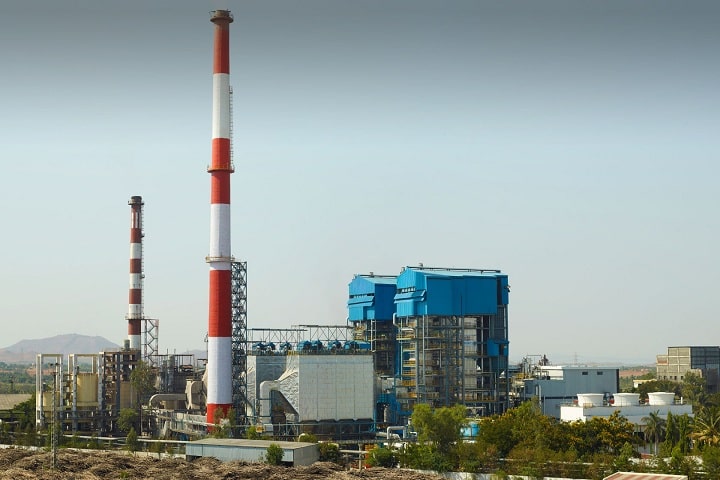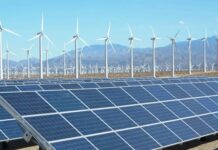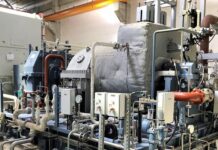The use of Sumitomo SHI FW (SFW) circulating fluidised bed (CFB) combustion technology has grown from small-scale applications to large ultra-supercritical power plants in less than 20 years.The CFB is rapidly becoming the technology of choice for solid-fuel-fired power generation applications, particularly for locations with lower quality fuel. It addresses the need for sustainable use of domestic fuels in many countries, notably India.
Sumitomo SHI FW
There is growing recognition that circulating fluidised bed technology is a good fit for India’s power generation needs. An independent expert committee* convened by the Indian Ministry of Power – with representatives from CEA (Central Electricity Authority), BHEL, NTPC, and NLC – for example, identified a number of benefits, notably fuel flexibility and inherently low emissions, without the need for expensive emissions control systems to meet the SOx and NOx below 100 mg/Nm3.
The combustion temperature in a CFB boiler (800-900°C) is significantly lower than in a pulverised fuel boiler (1300-1500°C), the committee noted, which results in significantly reduced NOx production, while limestone injected into the CFB furnace captures most of the sulphur in the coal, achieving a 95% reduction in SO2.
The lower combustion temperature also limits ash fouling and corrosion of heat transfer surfaces, the expert committee observes, allowing the CFB boiler to fire fuels that are too difficult for pulverised fuel boiler.
And even though the CFB combustion temperature is relatively low, furnace residence times for combustion and desulphurisation are longer, resulting in combustion efficiencies that are higher than those of a typical PC boiler.
The table below summarises the expert committee’s comparison between the PC and CFB boiler.
{Table} Summary of PC vs CFB comparison – the Indian Ministry of Power Expert Committee’s perspective
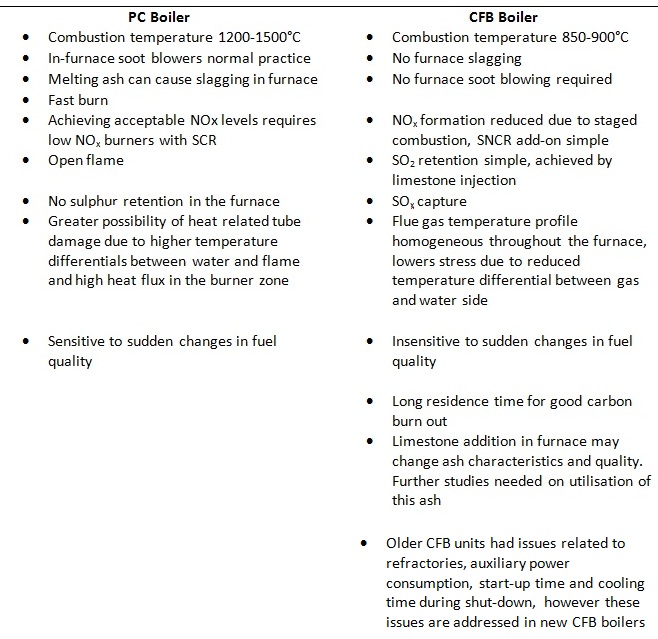
The committee concludes that the CFB boiler is particularly suitable for high ash content Indian coal, and can also provide the operational flexibility needed to accommodate a growing proportion of renewables on the grid, good biomass co-firing capabilities and low emissions. It suggests that it “may be preferable to go for CFB technology” and recommends that, as CFB units in the capacity range 400-600 MW are already proven and in operation around the world, a plant in this size range should be considered under Indian conditions. The plant should target the following performance characteristics, the committee proposes: superheat pressure, 250-300 bar; superheat temperature, 560-600°C; plant net efficiency (LHV), 41-43%; biomass co-firing up to 15%; turn down to 40% of MCR load; SOx and NOx below 100 mg/Nm3; particulates, below 20 mg/Nm3.
Why the SFW CFB?
Many power companies have embraced SFW CFB technology because it has demonstrated a wide fuel experience over the widest capacity range. The fuel flexible SFW CFB power plant is capable of consuming agricultural biomass and other unwanted byproducts (eg, waste bark, wood, plastic, cardboard, and paper), low quality fuels (eg, brown coals, lignites, and waste coals), as well as, high-energy, hard-to-burn fuels (eg, anthracite and petcoke). Conventional boilers typically require fuel with a heating value above 5500 kcal/kg, ash and moisture levels below 35%, and volatility above 20%. The SFW CFB, however, is capable of burning both the worst and best coals, lignites, biomasses and waste fuels with heating values ranging from 1000 to 8500 kcal/kg, ash and moisture levels as high as 60%, and volatiles down to 5%. Unlike a typical conventional boiler, the CFB is also capable of burning combinations of solid fuel and biomass-related fuels.
The fuel flexibility of the SFW CFB can provide an economic and relatively low-risk approach to carbon reduction. Biomass and waste fuels are considered carbon-neutral. By co-firing in a CFB, carbon emissions can be greatly reduced (Figure 1).
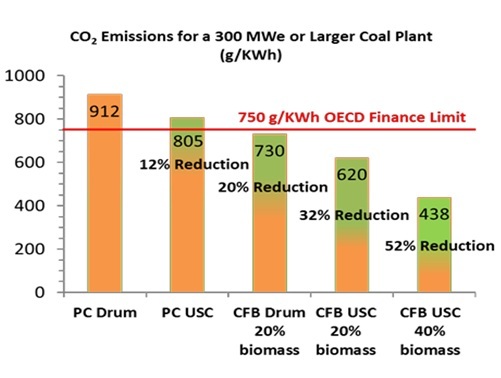
Figure 1. Carbon dioxide emissions from a large coal power plant firing a 5000kcal/kg Indonesian sub-bituminous coal with a LHV net plant efficiency of 38% for subcritical plant design and 43% for ultra-supercritical plant design. Source: Sumitomo SHI FW
A coal-fired CFB power plant co-firing 20% biomass can reduce its carbon dioxide emissions to below the 750g/kWh level set by the OECD standard for export credit financing new power plants. Further, by combining more efficient ultra-supercritical steam conditions with increasing shares of biomass, carbon dioxide emissions for a coal power plant can be reduced by over 50%.
The SFW CFB offers power generators the flexibility to find the right balance between power reliability, affordability and carbon emissions.The beauty of the CFB solution is that this balance can be continually adjusted over the life of the CFB plant, taking advantage of volatile coal prices and providing protection against declining coal quality and any future CAPEX to meet tightening emissions requirements.
Since fuel makes up 75%-85% of the operating cost of a large power plant, the economic benefits of using locally available low quality fuels are difficult to ignore. Co-firing coal with biomass, waste products, or other indigenous fuels allows the plant to be built at a larger scale to produce power at a much lower price point.
Use of low rank coal, lignite, and petcoke for power production is growing in India (as well as in China, Indonesia, Philippines, Australia, and South Africa), driven by better economics, lower fuel price volatility, and greater fuel supply security. Further, the use of biomass for power production is growing in many countries to reduce net carbon emissions and meet future CO2 reduction targets. These expanding low-quality solid-fuel markets across the globe have dramatically increased the value of fuel flexibility for large scale power plants and have been the primary driver behind the large CFB power plants coming on-line over the last ten years.
Fuel Flexibility Can Translate into Huge Fuel Cost Savings
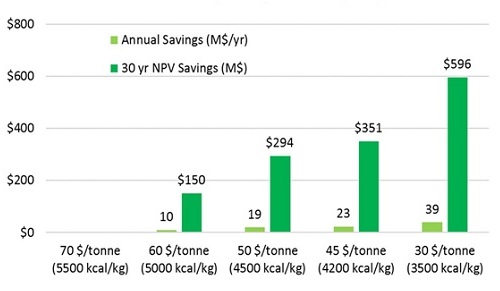
Figure 2. Fuel flexibility can translate into huge fuel cost savings. Potential operating cost savings deriving from lower fuel costs for a 600 MWe supercritical coal plant with 90% annual capacity factor firing USD$70/tonne (5500 kcal/kg) coal as base fuel. NPV based on 5% discount rate. Source: Sumitomo SHI FW
Optimising operating economics
Fuel flexibility can translate into huge operating cost savings over the life of a power plant (Figure 2). In addition to fuel flexibility and fuel security, the CFB also provides emission flexibility. As already noted, it can achieve low air emissions without post-combustion selective catalytic reduction NOx or FGD installation for SOx control, saving significant plant construction, operating, and maintenance costs over the life of the power plant. This flexibility is important since emission regulations are continually being tightened in nearly all countries, including India, and provides protection against potential further capital investment. In contrast, a pulverised fuel plant with a narrow fuel specification will find itself at a competitive disadvantage, with higher average fuel cost limiting its dispatch and financial returns.
Increasing plant reliability
Plants with SFW circulating fluidised bed boilers have demonstrated plant availabilities well above conventional PC boilers over a wider fuel range (see Figure 3).
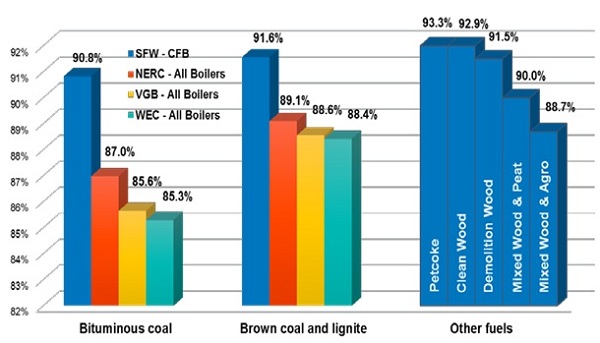
Figure 3. Average availabilities for PC plant fleets in North America, Europe and Asia compared with average availabilities of plants employing SFW CFBs. Plant availability is defined as the total hours the plant is available to run accounting for both planned and unplanned down time. Source: Sumitomo SHI FW
The economic value of the increased 3-5% availability of the SFW CFB plant over a conventional PC plant is demonstrated in Figure 4.
Boiler Reliability Can Drive A Project’s Financial Success
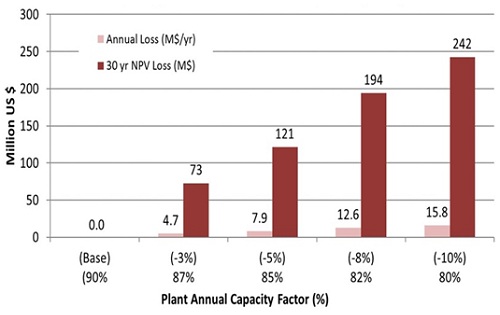
Figure 4. Boiler reliability can drive a project’s financial success. Impact of plant reliability on plant net income for 600 MWe ultra-supercritical coal plant firing 4200 kcal/kg Indonesian coal at US$45/tonne, selling power at US$60/MWh. The vertical axis is calculated as energy sales revenue minus plant operating cost. Plant capacity factor equals the actual electricity produced by plant/possible maximum (net MWe x 8760 h). Net present value (NPV) is based on 5% discount rate. Source: Sumitomo SHI FW
This higher availaibility difference was maintained for even brown coals and lignites. The total economic value can translate to over a $100 million NPV gain in net income over the life of a 600MWe power plant.
Power plant examples
Many recent projects illustrate the successful application of SFW CFB technology but two projects have particular relevance to India. First, the Lagisza CFB power plant is the longest operating supercritical CFB power plant in the world today (Figure 5).
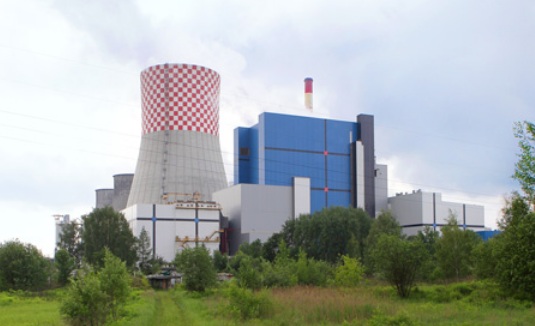 Figure 5. Lagisza CFB power plant, Bedzin, Poland. Source: Sumitomo SHI FW
Figure 5. Lagisza CFB power plant, Bedzin, Poland. Source: Sumitomo SHI FW
Located at Tauron’s Lagisza site in Bedzin, Poland, the plant has been in operation since 2009. At the heart of the facility is a 460 MWe supercritical SFW CFB featuring a very impressive net plant efficiency of 43.3% (LHV) on bituminous coal. Perhaps most importantly, the plant meets its permitted stack emissions without SCR or FGD equipment, saving Taur on over US$45 million in construction costs and millions more each year in avoided O&M costs.
An even more impressive example of SFW CFB technology is the 2200 MWe Green Power Plant in Samcheok, South Korea (Figure 6).
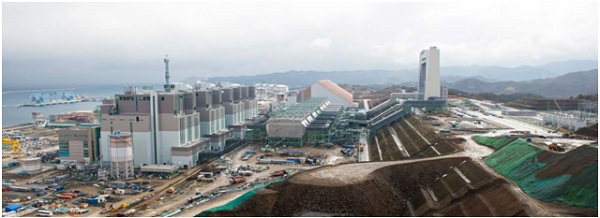
Figure 6. The2200 MWe Green Power CFB plant in Samcheok, South Korea. Source: Sumitomo SHI FW
The Samcheok plant has four 550 MWe SFW CFBs operating at ultra-supercritical steam conditions (257 barg, 603/603°C). The Samcheok plant meets even tighter stack emissions(50 ppm for SOx and NOx) than Lagisza, again without using FGD equipment, saving Korea’s Southern Power Company (KOSPO) over $100million in construction cost. T
The plant has a 42.4% net plant efficiency when firing it’s 4200 kcal/kg Indonesian sub-bituminous design coal. But the key reason that KOSPO choose the SFW CFBs was to tap into huge operating cost saving associated with fuel flexibility which is possible due to the plant’s wide fuel range spanning a range of heating values of 3400-6000 kcal/kg (14–25 MJ/kg), moisture levels of 20-43% and ash levels of 1.5-17% ash. The CFBs are also capable of co-firing indigenous bituminous coal and up to 5% biomass. The plant went into full commercial operation between December 2016 to June 2017, and is now the most advanced CFB based power plant operating in the world.
The value of CFB is clear for India
CFB can bring high value to India, with its large reserves of low-quality coals. CFB technology has been proven at large scale to economically, cleanly and reliably convert these low rank fuels into power and steam, lowering the country’s energy costs and improving its energy security. CFB technology also keeps the door open for co-firing coals, petcokes and biomass from foreign or domestic sources, when prices and/or regulations are right, so plants don’t have to be locked into one fuel source.
The fuel and emissions flexibility offered by CFB technology translates into more value for a power project developer in terms of CAPEX and OPEX savings since no SCR or FGD is required. Project returns are also increased due to higher plant reliability and less maintenance.
* Expert committee report on CFBC technology with large size units/supercritical/ultra-supercritical parameters and its feasibility of adoption in the Indian power sector, Government of India, Ministry of Power, Central Electricity Authority, New Delhi, August 2018

































